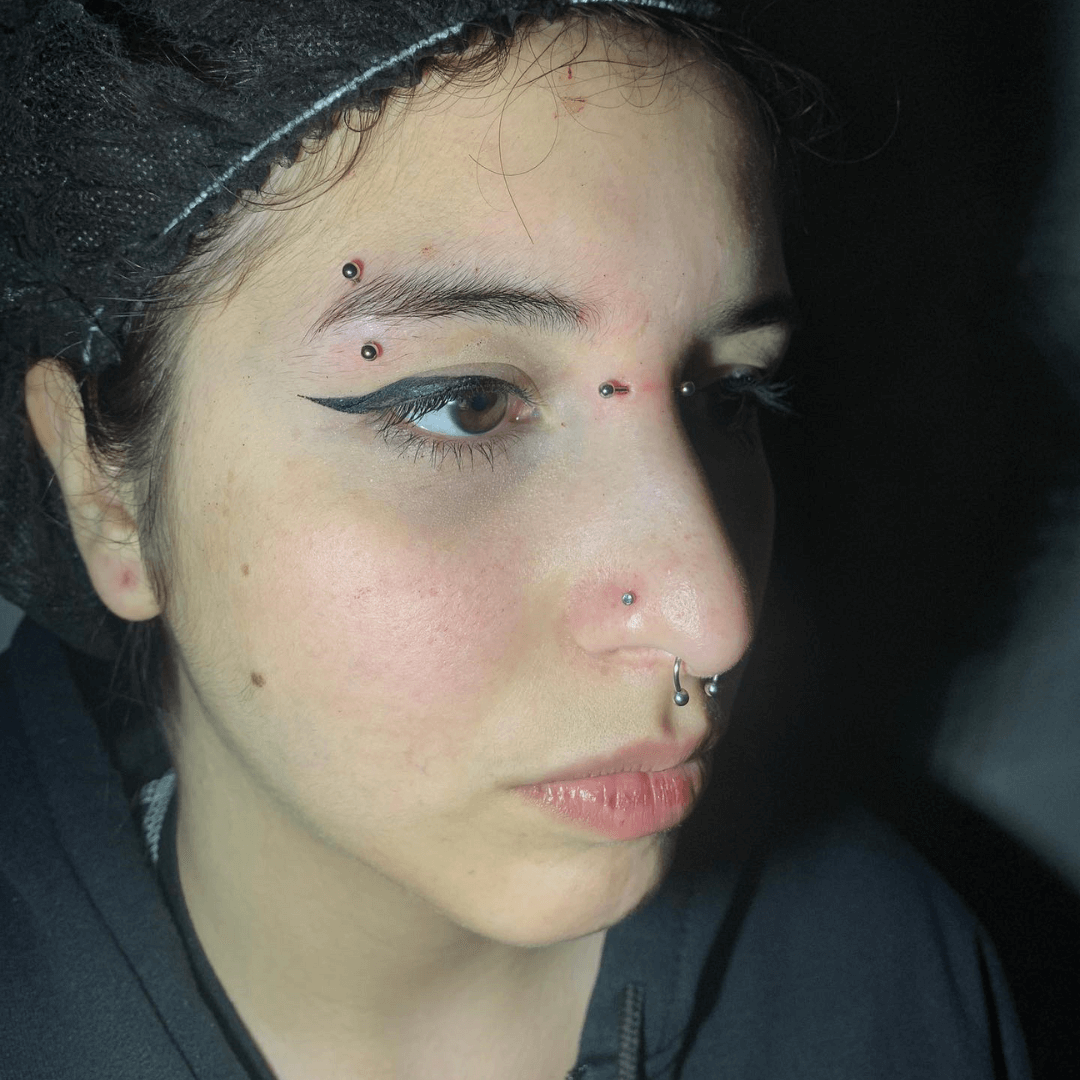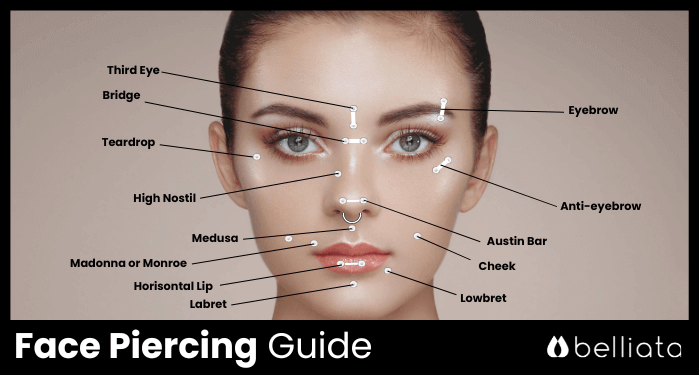Face Piercing 2026 Guide: Cost, Pain Level, and Placement Options
Posted on Oct 23, 2023
Recently, many people prefer facial piercings to classic ear piercings. More and more often we see celebrities wearing varied and bold facial jewelry, so this is starting to interest many people. Despite all the charm and unusualness, facial piercing is a serious procedure that cannot be done lightly. To help you learn more about facial piercings and make a decision, we have prepared a guide.
What Is Face Piercing?
The term "piercing" encompasses a diverse array of techniques, jewelry styles, and anatomical locations. While many are familiar with the common practice of ear piercing, there is a growing trend toward body and facial piercings.
Face piercing is a type of body modification that involves creating small holes or piercings in various parts of the face for the purpose of inserting decorative jewelry. Common areas for face piercing include the nose, eyebrows, lips, cheeks, and even the tongue. The choice of jewelry and the location of the piercing can vary widely, allowing individuals to express their personal style and preferences. Face piercings are often done by trained professionals in piercing studios to ensure safety and minimize the risk of infection or complications.
The Types Of Face Piercing
Let’s take a look at the other popular facial piercings you can get, and whether they might be right for you.
Dimple/ Cheek Piercings

These go through your cheek (where dimples usually sit” to the inside of the mouth.
Bridge Piercings

This surface piercing goes through the bridge of your nose, between your eyes.
Who Might Want A Facial Piercing, And Why Do People Like Them?
People getting their dimples pierced often want a bit of sparkle from the jewelry, to accentuate their smile. Some people even want the scars.
Bridge piercings are one of the more “edgy” options that people enjoy because of its visual impact- it’s very visible in the middle of your head.
How Much Are They?
Bridge and cheek piercings normally cost between $50 to $70, but can be a bit more, depending on where you’re located and your piercer’s skill level.
Do Dimple or Bridge Piercings Hurt?
Dimple piercings aren’t too painful, but getting your bridge pierced can hurt a lot, because it’s in an awkward area.
How Long Do These Facial Piercings Take To Heal, And What Are The Risks?
As with any oral piercing, you’ll need to keep your mouth clean after getting your dimples pierced, since infection is a big risk.
Be careful not to touch your bridge, and keep the jewelry free of lotion, skin oil and debris. Bridge piercings can migrate if the jewelry is too heavy, or if they get irritated, so treat it carefully.
A bridge takes about two to three months to heal, while dimples may take up to a year.
Where To Get Face Pierced?
We have a great suggestion for finding an excellent piercing studio in your vicinity: utilize the Belliata free booking platform. Simply search for "face piercing near me" on Belliata to access a list of top-notch piercing studios. Here, you can explore different piercing studios, compare their pricing, peruse client reviews to gauge service quality, check the piercer's availability, and conveniently book your face piercing appointment online. Additionally, you'll have access to the piercer's portfolio, allowing you to view their previous work.
It's crucial to remember that face piercing constitutes a permanent alteration of your skin, so selecting a professional and reputable piercing studio with a wealth of positive client feedback is paramount. You should feel at ease with your chosen piercer and trust them completely. Verify their qualifications and ensure that all the necessary tools and equipment for the piercing procedure are properly sterilized and opened in your presence.
Recommendations
Now that you've had a chance to consider your options, we trust that you feel self-assured and enthusiastic about proceeding with your face piercing.
Face piercings are undeniably a blend of boldness and charm, but they also demand dedicated maintenance. Adequate piercing care necessitates routine use of antiseptic solutions, ongoing vigilance, and guidance from a professional piercer or therapist. Ensure that you are fully prepared for this commitment.
If you would like to learn more about piercing please check the following articles:
- Types Of Nose Piercing
- Types Of Lip Piercing
- Types Of Eyebrow Piercing
- Types Of Tongue Piercing
- Types Of Ear Piercing
- Types Of Belly Piercing
- Types Of Nipple Piercing
- Types Of Genital Piercing
Citations
Body piercing: medical consequences and psychological motivations
https://www.thelancet.com/journals/lancet/article/PIIS0140673603129558/fulltext
Body piercing
https://www.bmj.com/content/320/Suppl_S1/00011627.abstract
Complications of body piercing
https://www.aafp.org/pubs/afp/issues/2005/1115/p2029.html

